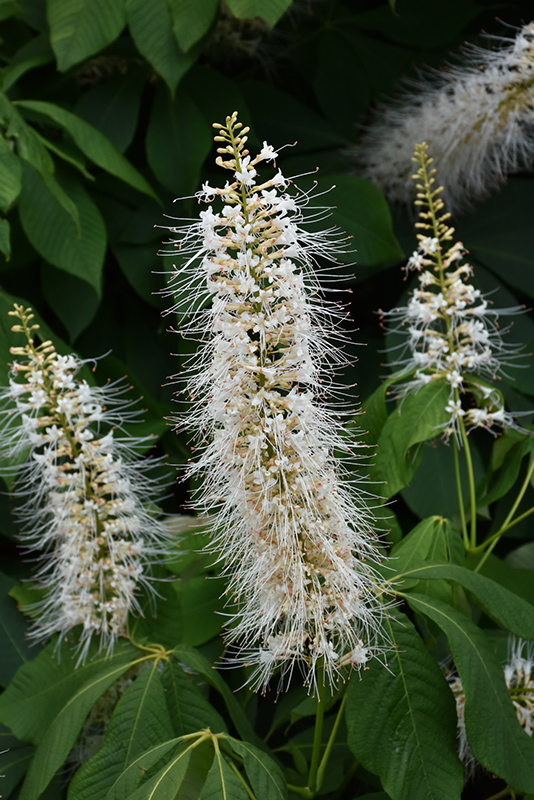Bottlebrush Buckeye features showy spikes of white flowers with red anthers rising above the foliage in early summer. It has dark green deciduous foliage. The large palmate leaves turn yellow in fall.
Bottlebrush Buckeye is a dense multi-stemmed deciduous shrub with a ground-hugging habit of growth. Its strikingly bold and coarse texture can be very effective in a balanced landscape composition.
This is a high maintenance shrub that will require regular care and upkeep, and is best pruned in late winter once the threat of extreme cold has passed. Gardeners should be aware of the following characteristic(s) that may warrant special consideration;
Bottlebrush Buckeye is recommended for the following landscape applications;
Bottlebrush Buckeye will grow to be about 8 feet tall at maturity, with a spread of 12 feet. It tends to fill out right to the ground and therefore doesn't necessarily require facer plants in front, and is suitable for planting under power lines. It grows at a slow rate, and under ideal conditions can be expected to live for 50 years or more.
This shrub performs well in both full sun and full shade. It prefers to grow in average to moist conditions, and shouldn't be allowed to dry out. It is not particular as to soil type or pH. It is somewhat tolerant of urban pollution. Consider applying a thick mulch around the root zone in winter to protect it in exposed locations or colder microclimates. This species is native to parts of North America.

